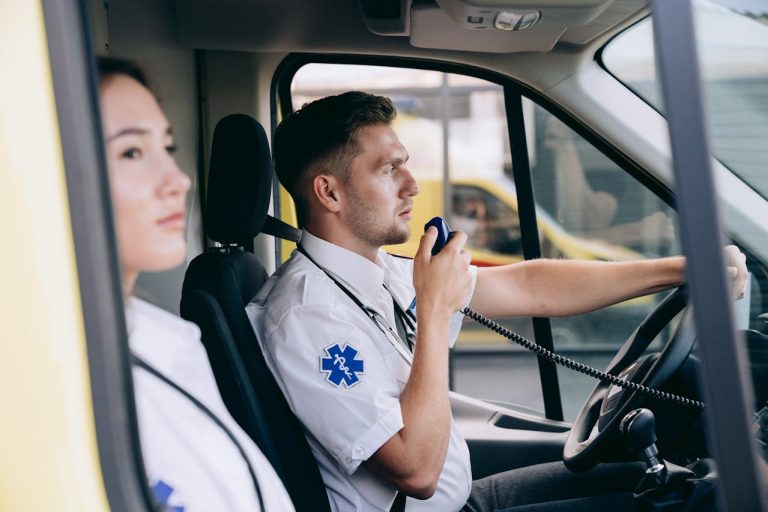
If the worth of a picture is definitive to be an equivalent of a thousand words, then not even a mammoth of terms can comprehensively capture an outcome fueled by friendly gestures and cute identities when the robots take center stage. The daily life and schedule of a robot entails a 24/7 365 days a year routine of scanning, tabulating, and counter-checking data. Thus we are bound to bump into them after every minute if the robotic prophecies come to fruition. If this instance is the case, then it is only fair that such robots are rightfully presentable so as not to unsettle the untrustworthy humans. Such a situation should copy some notes from the Rozum blog where experience with a robotic barista will leave you with smiling feedback.
Hence dealing with robots in a human-populated society is all about the worth of two entities, that is personality and identity. The word ‘weird’ should never come to mind when a civilian or customer interacts with a robot. The character of such a robot should immediately draw a smile from the nearby human and not brace them to prepare for an apocalypse. The humans need to feel that the robot is a helping hand here to lessen the burden on their shoulders and not some undercover GI Joe studying the potential vulnerabilities of this society.
The outreach of robots continues to grow as their dominance is now in our living rooms and factories. However, the prevalent use of robots does not guarantee a warm reception. Most humans fear for the safety of their jobs as they have no idea of how to compete against an opponent that never tires nor sleeps. But we are the same humans who invented the ‘time is money’ slogan, and statistical data proves that the automation technology tied to robots truncates the traditional labor hours by a significant percentage, 65%.
Hence the uprise and popularity of robots have nothing to do with replacing humans’ efforts but increasing our production scale. We can also dismiss the job losses claims with the fact that the functionality of robots is efficiently unidirectional such that they adapt their design functionality to their assigned tasks. Humans, on the other hand, have a multidirectional feature such that they do not necessarily need a design upgrade to adapt to a new way of life. They are the creators, and creation is limitless; thus, their evolution and adaptation keep getting better regardless of the obstacles in play.
The Practical Facts
A case example is a retail robot, it can mimic just the right amount of human qualities, but that is not enough proof to state that it has humans entirely out of the fold. Retailers like Walmart can relate to this scenario. Its estimate of 1.5 million employees benefits from the precision and lack of fatigue these robots possess. The retail’s shelf-scanning automated robots are a blessing in disguise for the customers, employers and employees. It is due to the comfort factor in working with them. It would be impossible to run such a big retail store without the help of robots. Their exceptional precision adds up to their efficient means of reducing the time needed to complete a task.
The design of the shelf-scanning robot mimicked a faceless approach, but its presentation remained appealing. The faceless design aimed to psychologically pass a message to the store’s customers that the robot’s functionality does not support an interactive mode of operation. However, these robots did not fail to have a unique identity displayed on name tags they wore as badges.
Thus a mass deployment of such robots will ensure that their associates or owners will have an attachment to them through the name identities. Hence it would be easy to trace such robots when its time for changing batteries or doing scheduled repairs and maintenance. A customer will also quickly identify with the row of a retail store through the presence of the robot assigned to that specific row.
Despite the automated functionality of such robots, they still need a touch of humanity in their daily routines. They typically return to their docking stations, after the end of their shifts or to recharge their batteries, the presence of a human will need to be in play to supervise their recharging or account for their fitness for the next shift.
WALL-E, for instance, is a robot that is fully automated and does not need any aid from humans. Still, circumstances like getting stuck on a rug will require the immediate intervention of a human worker. Its automation functionality will thus send a prompt text to the personnel on duty, asking for assistance. Therefore this symbiotic relationship that bonds both the humans and robots will always find a reason to stick around.
Another instance is a robot simulating the human blink of an eye. Such cartoon-like eyes usually do not have an attachment to critical functionality. Still, they are there to demonstrate to the customers and other human workers that the robot is operational. They also bring comfort to the customers interacting with them, and thus a failed eye-blink will inform the store manager that something is wrong with the robot. Hence it will translate to the need to recharge it or run further diagnostics to find out what could be the issue.
An eye and a smile on the face of a robot is an interpretation. It interprets harmonious intentions to the eyes of humans. These robots can be artistic in their presentation, and thus, the friendly gestures they sell do not have to end with a name tag and the plight of a beautiful facial gesture. The self-scrubbing floor scrubbers at Walmart are going the extra mile. Equipped with a comfy seat, a cup holder, and a steering wheel already in place, it’s intention is to inform the present workers at the store of a long day of thorough cleansing. They are thus welcome to tag along. This offer is typically optional as 8/10 times the scrubber operates on its own company. It moreover has a prompt screen to regulate its movement. Thus the robots with smiles on their faces will make the injury-prone tasks seem like a walk in the park, and such a gesture is usually a wonder to the individuals monitoring it.
It is thus a psychological fact that humans will only attack an innovative technology if it feels like a threat to them. Hence who in their right mind would raise a voice at a hardworking, googly-eyed, and smiling robot named Marty? Humans can adapt and find other means of survival, but all the robots ask for is our appreciation of their input. Wearing smiles and googly eyes is their way of saying that they want to be as human as possible if we let them. They are sincerely trying, and we should not turn into robots as they turn into humans.






